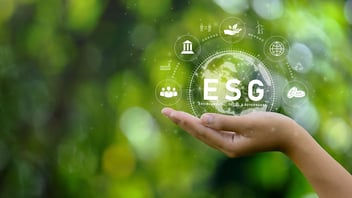Heywood
Heywood is pleased to announce that we have successfully offset our carbon emissions for 2022, underscoring our dedication to sustainable business practices.
In an era where climate change is becoming an ever-pressing global challenge, it is incumbent upon businesses to take proactive measures to mitigate their environmental impact. Carbon offsetting has emerged as a powerful tool for companies to neutralise their carbon emissions, demonstrating their commitment to sustainability and contributing to a greener future.
This blog explores the reasons why Heywood has embraced carbon offsetting as an essential part of our corporate responsibility strategy. As a result of our constantly evolving ESG strategy, we are delighted to announce that we have offset our carbon emissions for 2022.
A carbon offset is a reduction or removal of carbon dioxide or other greenhouse gases made to compensate for emissions made elsewhere.
Why are we offsetting our emissions?
Carbon emissions are a major obstacle to efforts to slow climate change. The Paris Agreement, which aims to limit global warming to well below 2°C above pre-industrial levels, will only be successful if governments, businesses, and individuals work together to reduce emissions.
Heywood is committed to the various elements of our ESG strategy, and we want to demonstrate our commitment to environmental sustainability and mitigate the impacts of climate change. We aim to raise awareness of ESG with our clients, partners, and suppliers.
There are many reasons why an increasing number of businesses and organisations are choosing to offset their emissions. The most common ones are:
- Supporting projects that provide the solution to climate change (e.g., helping decarbonise electricity grids, improving energy efficiency, reducing deforestation and reforestation)
- To become part of the solution to climate change
- Helping reduce global CO2e emissions
- Helping enhance developing countries – economic, social & communities
- Meeting ESG targets
- Giving back to local communities where business is being done/products are sourced
- Fostering local community relations
- Helping to build brand reputation
- Engaging staff and enthusing internal teams
How have we offset carbon emissions?
Over the last few years, we have been working with a specialist organisation, Carbon Footprint. We analyse the impact of our office, data centre, travel, financial systems and recycling which we share with Carbon Footprint who use the data to calculate the amount of carbon we have produced. This in turn is then calculated into a cost that we pay to offset the carbon.
Carbon offsetting plays the role of balancing out the emissions that have already been caused, by financially supporting projects around the world that help provide solutions to climate change.
What projects have we invested in?
Through our carbon offsetting initiative, we have invested in three different projects.
- The Zoba Anseba Community Safe Water Project supports the provision of safe water using borehole technology to hundreds of households within the Zoba Anseba district. By providing safe water, the project will ensure that households consume less firewood during the process of water purification and as a result there shall be a reduction of carbon dioxide emissions from the combustion process.
- PACAJI Redd+ Project: This project is working to prevent unplanned deforestation in native forests, which has occurred due to logging, squatting and attempts to implement pastures. The project is expected to avoid over 22 million tonnes of carbon dioxide equivalent greenhouse gas emissions over a 40-year period. This will be achieved by managing the land in the form of a "private conservation reserve", through rigorous monitoring and enforcement. From 2012 the project has scaled-up its monitoring activities by employing and properly training local villagers for monitoring and enforcement activities.
- Wind Power Project in Maharashtra: The main purpose of this project activity is to generate clean form of electricity through renewable wind energy source. The Project is a new facility, and it plans to utilize wind energy to generate electricity and supply it to distribution licences which is a part of the NEWNE (Northern, Eastern, Western and North-Eastern) grid of India. The project activity reduces the dependency on fossils fuels which are predominantly used for electricity generation in India and helps reduction of climate change impacts.
As well as offsetting Carbon, we have an ongoing commitment to reduce our carbon emissions and are working with external partners to create a carbon reduction plan and have funded the planting of trees in conservation areas in the UK.
Read more about our Environmental Commitment.


